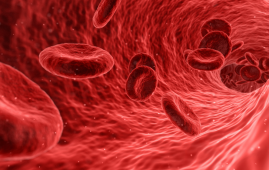

Stroke remains one of the leading causes of long-term disability, with gait impairment affecting more than 80% of survivors. Limited walking ability reduces independence, restricts social participation, and compromises quality of life. Alarmingly, nearly one in five stroke survivors never regain the ability to walk outside their homes. Traditional rehabilitation therapies such as treadmill training and therapist-guided exercises help, but often fall short in restoring functional gait in patients with chronic stroke. This gap in care has led to growing interest in innovative, non-invasive rehabilitation strategies.
Explore all Cardiology CME/CE Conferences
FAST Walk: A New Approach to Post-Stroke Gait Recovery
Researchers at Juntendo University, led by Professor Toshiyuki Fujiwara and Dr. Mami Tani, have developed an innovative system called FAST walk. Published in the Journal of NeuroEngineering and Rehabilitation (July 2025), the study introduces an electromyography (EMG)-triggered rehabilitation method that synchronizes transcutaneous spinal cord stimulation with hip extensor activation. Unlike conventional techniques, this system uses the patient’s muscle signals to stimulate key gait phases, enhancing spinal circuit excitability and improving coordination.
In a randomized controlled trial involving chronic stroke patients, participants were divided into three groups: FAST walk, spinal stimulation alone, and treadmill training. Each underwent 10 sessions over five weeks, in line with Japan’s rehabilitation regulations. Remarkably, all groups showed clinically meaningful improvements in walking speed, but only the FAST walk group achieved statistically significant within-group gains. Their walking speed increased from 0.55 m/s to 0.70 m/s, suggesting added benefit from the dual-stimulation model.
Clinical Relevance and Next Steps
While no significant changes were observed in reciprocal inhibition markers, likely due to measurements at rest, the results confirm the feasibility, safety, and clinical potential of FAST walk. Within a limited therapy window, patients experienced measurable improvement, underscoring its real-world applicability. According to Prof. Fujiwara, FAST walk may become a vital therapy option for patients with chronic stroke (6+ months post-event), a population often considered resistant to further rehabilitation progress.
Future research with larger sample sizes and longer follow-ups will refine stimulation protocols and evaluate long-term outcomes. Integrating real-time gait analysis and spasticity assessments during walking could provide further clinical insight.
Transforming Post-Stroke Care
For healthcare professionals, FAST walk represents an evidence-based, non-invasive strategy to address one of stroke rehabilitation’s most persistent challenges. As rehabilitation medicine continues to integrate neuromodulation therapies, FAST walk stands out as a promising option to restore gait function, improve patient mobility, and ultimately enhance quality of life for stroke survivors.
For More information:
Tani, M., et al. (2025) Electromyography (EMG)-triggered transcutaneous spinal cord and hip stimulation for gait rehabilitation in persons with chronic stroke: a randomized, controlled trial. Journal of NeuroEngineering and Rehabilitation. doi.org/10.1186/s12984-025-01690-0.
more recommended stories
 Fat-Regulating Enzyme Offers New Target for Obesity
Fat-Regulating Enzyme Offers New Target for ObesityKey Highlights (Quick Summary) Researchers identified.
 Spatial Computing Explains How Brain Organizes Cognition
Spatial Computing Explains How Brain Organizes CognitionKey Takeaways (Quick Summary) MIT researchers.
 Gestational Diabetes Risk Identified by Blood Metabolites
Gestational Diabetes Risk Identified by Blood MetabolitesKey Takeaways (Quick Summary for Clinicians).
 Phage Therapy Study Reveals RNA-Based Infection Control
Phage Therapy Study Reveals RNA-Based Infection ControlKey Takeaways (Quick Summary) Researchers uncovered.
 Pelvic Floor Disorders: Treatable Yet Often Ignored
Pelvic Floor Disorders: Treatable Yet Often IgnoredKey Takeaways (Quick Summary) Pelvic floor.
 Urine-Based microRNA Aging Clock Predicts Biological Age
Urine-Based microRNA Aging Clock Predicts Biological AgeKey Takeaways (Quick Summary) Researchers developed.
 Circadian Control of Neutrophils in Myocardial Infarction
Circadian Control of Neutrophils in Myocardial InfarctionKey Takeaways for HCPs Neutrophil activity.
 E-Cigarette Use and Heart Attack Risk in Former Smokers
E-Cigarette Use and Heart Attack Risk in Former SmokersKey Takeaways for Clinicians and Nurses.
 36-Week Pre-eclampsia Screening May Reduce Term Risk
36-Week Pre-eclampsia Screening May Reduce Term RiskA New Preventive Strategy for Term.
 Cardiovascular Risk and Sudden Cardiac Death in Diabetes
Cardiovascular Risk and Sudden Cardiac Death in DiabetesRising Sudden Cardiac Death (SCD) Risk.

Leave a Comment